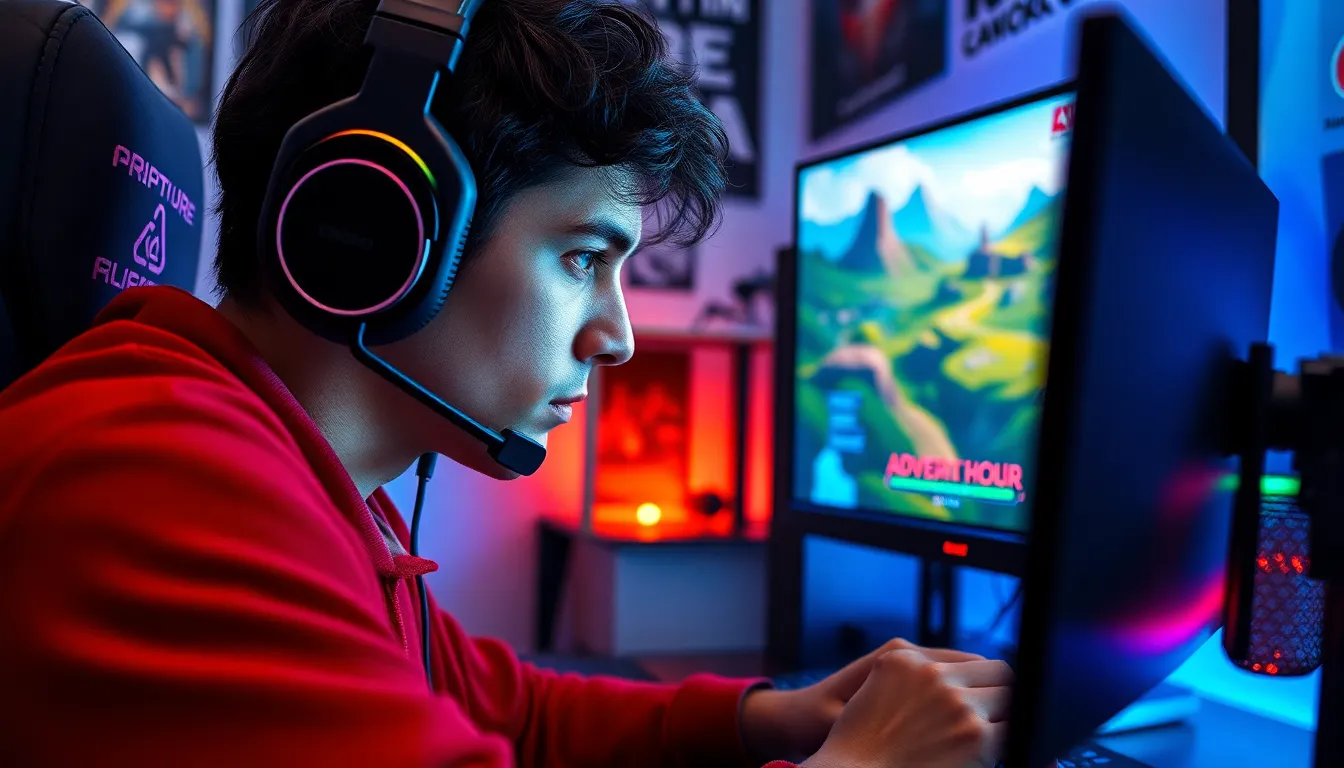The gaming world buzzes with excitement as players dive into the latest releases, eager to share their early gameplay impressions. It’s like a flavor of ice cream—everyone’s got a favorite, and some are downright surprising. Whether it’s a breathtaking open world or a quirky character that steals the show, first impressions can set the tone for a game’s journey.
In this whirlwind of digital adventures, players find themselves navigating through glitches, epic wins, and maybe a few “what were they thinking?” moments. Early gameplay impressions not only capture the essence of a game but also shape the conversations that follow. So grab your controller and get ready to explore the highs and lows of the latest titles, because the first few hours can reveal more than just a pretty face; they can uncover hidden gems or total flops.
Table of Contents
ToggleOverview of Early Gameplay Impressions
Early gameplay impressions play a critical role in shaping a player’s expectations and perceptions of new titles. Players often focus on key elements like graphics, mechanics, and story. These aspects significantly impact enjoyment and can reveal strengths and weaknesses right away.
For instance, a game with immersive graphics may capture attention instantly, while poor mechanics might lead to frustration. Engaging open worlds can invite exploration, encouraging players to share their discoveries. Unique characters often create connections, making players invested in the story and outcomes.
Discoveries made in the first few hours resonate strongly within the gaming community. Players frequently discuss their experiences on forums or social media. These shared insights can influence decisions, helping others choose what to play next. Games that deliver engaging early experiences are more likely to receive positive word-of-mouth.
Feedback from early gameplay can also lead developers to make adjustments post-launch. Bugs identified during initial play can prompt timely patches or updates, enhancing overall performance. Players anticipate improvements based on community reactions, creating a feedback loop that benefits everyone involved.
Early gameplay impressions are crucial in determining a title’s future and impact. They not only highlight individual player experiences, but also contribute to broader discussions within the gaming ecosystem. The first moments with a game set the tone for ongoing engagement and enjoyment.
Key Features Observed

Early gameplay reveals several standout features that define the player experience. Observations indicate a focus on intuitive gameplay mechanics and immersive visual and audio design.
Gameplay Mechanics
Players encounter fluid controls that enhance interaction during gameplay. Combat systems often feature combo opportunities that keep engagements dynamic. Exploration encourages players to traverse intricate maps filled with hidden paths and secrets. Resource management mechanics add depth, requiring strategic planning for survival. Challenges presented in missions engage players, fostering a sense of accomplishment upon completion.
Visual and Audio Design
Stunning graphics create an engaging atmosphere that captures attention. Environmental details enrich the world, providing a sense of realism. Vibrant color palettes draw players in, while varied settings maintain intrigue as they explore. Sound design complements visuals, immersing players with realistic effects and a captivating soundtrack. Voice acting contributes emotional depth, enhancing character connections and story immersion.
Player Experience
Early gameplay experiences create a significant impact on players. These moments shape their perceptions and set the tone for future engagement.
Initial Reactions
Players often express immediate excitement upon starting a new game. Captivating graphics and engaging mechanics can draw them in instantly. Many report feelings of joy when they explore open worlds brimming with details. Fluid controls enhance their interaction with the game, fostering a deeper connection. Some may experience frustration if mechanics don’t align with expectations. Communities frequently engage in discussions, sharing varied first impressions. Positive reactions may strengthen a player’s interest. Early feedback helps developers identify areas needing improvement.
Long-Term Engagement Potential
Sustaining player interest hinges on the overall quality of early experiences. Compelling narratives and character development enhance emotional investment. Games featuring rich content, like side missions or collectibles, keep players returning. Dynamic gameplay mechanisms encourage exploration and strategy, maintaining excitement. A title can remain relevant if players discover new aspects over time. Community engagement through forums can further bolster longevity. Regular updates and feedback loops contribute to a game’s evolution. Additionally, well-crafted immersive environments lead to memorable moments, fostering lasting connections.
Comparisons with Similar Titles
Early gameplay impressions reveal how a new title stacks up against established favorites. Comparing mechanics with similar games provides insight into what players might expect. For instance, a dynamic combat system can echo the engaging elements found in popular franchises like “Dark Souls” or “The Witcher.” These comparisons highlight strengths in fluidity and challenge, setting a benchmark for player satisfaction.
Graphics often play a crucial role in these early assessments. Games like “Horizon Zero Dawn” or “Ghost of Tsushima” set high standards for visual impact. If a new title fails to deliver comparable graphics, it can leave players disappointed despite potential gameplay strengths. Voice acting and sound design also matter, with successful games creating fully immersive experiences that resonate on an emotional level.
Exploration in open worlds can drive comparisons, particularly with titles such as “The Legend of Zelda: Breath of the Wild.” The desire for intricate maps filled with secrets often leads players to draw parallels. If a new game offers less freedom or fewer discoveries, its appeal may suffer.
Community discussions also reflect these comparisons. Players frequently weigh early impressions against past experiences. Positive feedback can boost a game’s popularity or set expectations that it must strive to meet. Frequent updates or developer engagement will enhance these comparisons, demonstrating responsiveness to early feedback.
Character development remains another area where titles compete. Rich narratives cultivate player investment. Games that deliver compelling stories alongside strong characters can benefit from direct comparisons with narrative-driven games like “The Last of Us.” Engaging characters or significant emotional arcs elevate players’ early experiences and solidify a game’s standing among peers.
Early gameplay impressions play a crucial role in shaping the gaming experience. They set the stage for player expectations and can determine a title’s long-term success. Engaging visuals and intuitive mechanics draw players in while any shortcomings can lead to immediate frustration. The community’s feedback and discussions amplify these impressions, influencing choices and perceptions across the gaming landscape.
As players dive into new titles they create a shared narrative that enhances the overall gaming culture. This dynamic interaction not only fosters excitement but also encourages developers to refine their products based on early feedback. The first hours of gameplay are more than just an introduction; they’re a pivotal moment that can define a game’s journey in the hearts of players.










